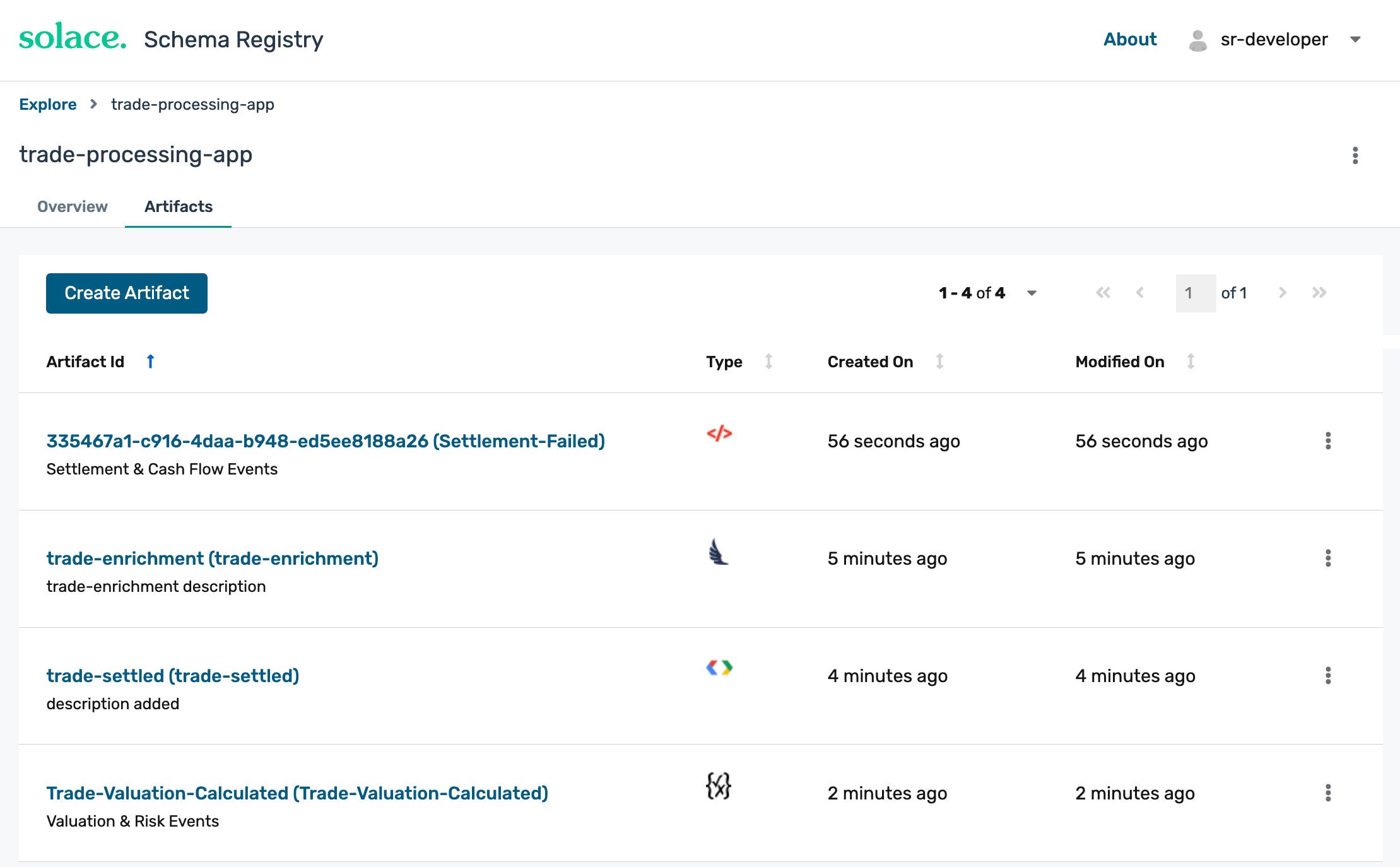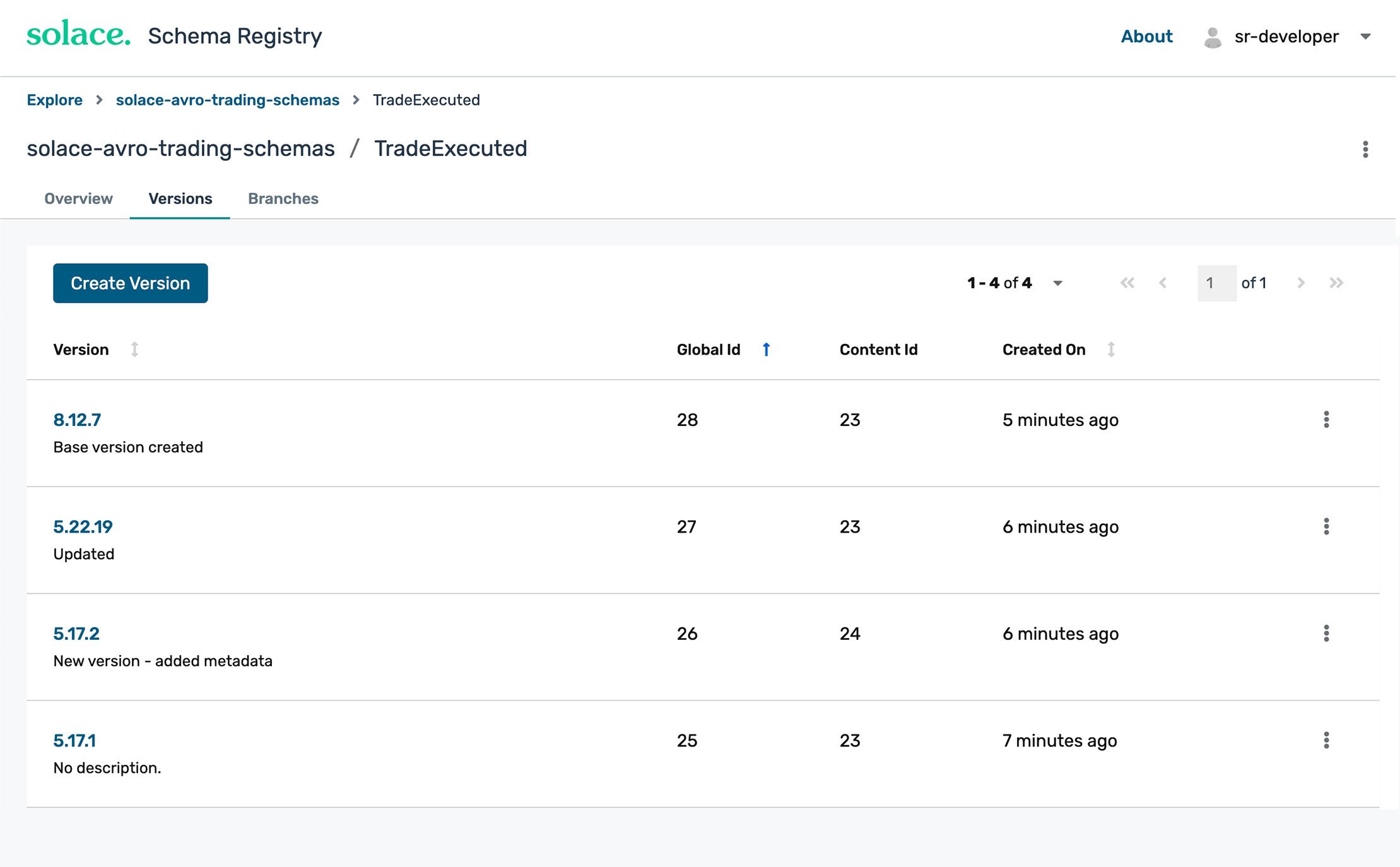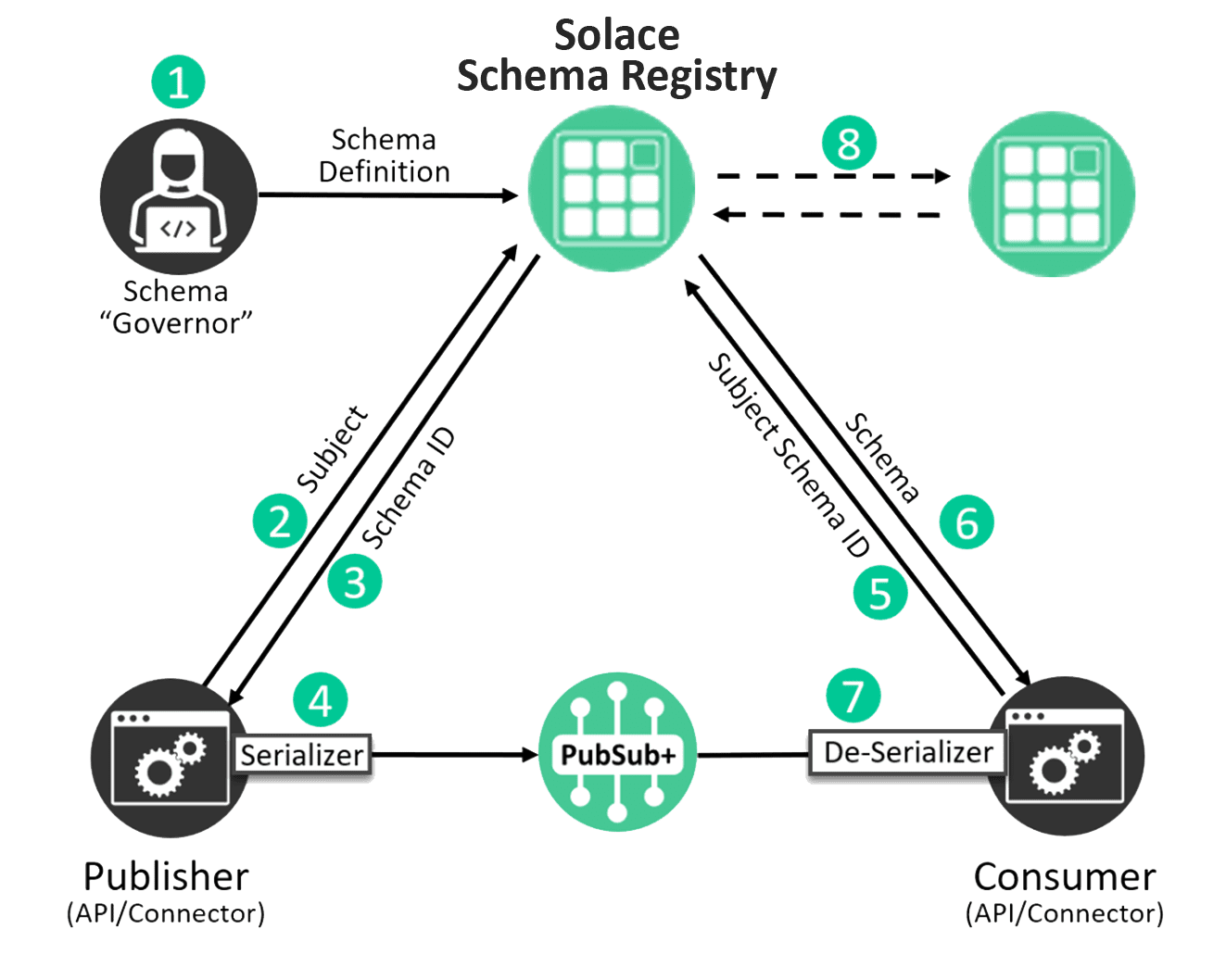What can you do with Solace Schema Registry?

Consolidate Your Schemas
Store and manage all your event schemas (Avro, JSON, XML, Protobuf, etc.) either in a single, easily accessible location,. or distributed and synchronized across environments to provide a single source of truth for your data definitions.
This gives middleware teams complete flexibility over the deployment and scope of the registry to ensure organizational needs are optimized.
How Solace Schema Registry Works
- “Governor” defines valid schema via Registry UI/API
- Publisher provides its schema subject and strategy to the registry
- If valid, registry returns schema ID
- Publisher serializer validates data and adds schema ID and schema metadata to message
- Consumer provides schema ID to registry
- Registry responds with matching schema
- Consumer de-serializer uses schema to map message metadata to variables
- Schema registries synchronize schema (optional)



